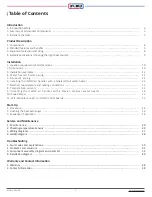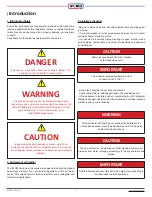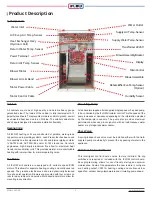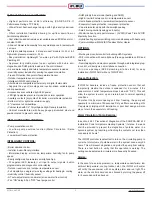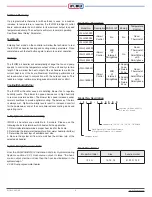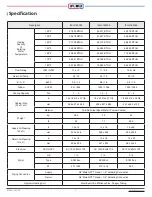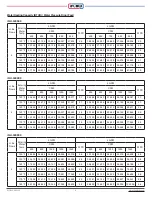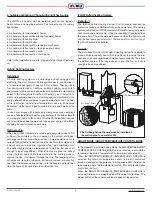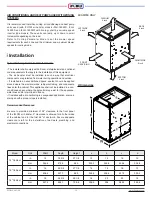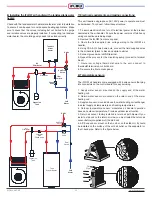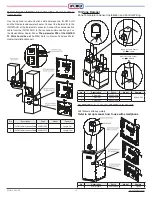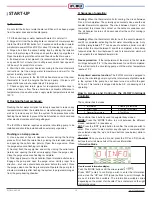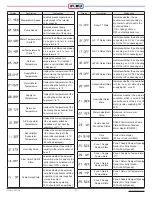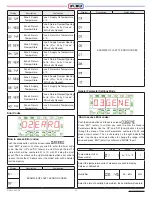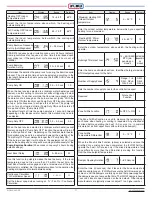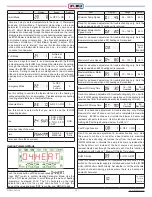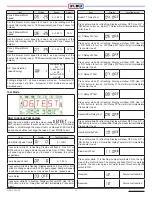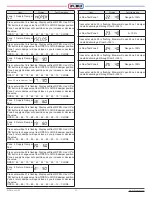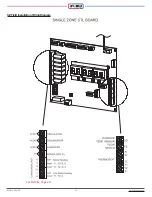
iFLOW HVAC INC.
www.iflowhvac.com
9
4. Suitable applications: Choosing the right heat source
The iFLOW air handler can be installed with various types of
heat sources and heating systems. The following are its primary
applications:
1. Air handler with tankless water heater
2. Air handler with conventional thank-type water heater
3. Air handler with heating boiler
4. Air handler with combi boiler
5. Air handler with heat pump + tankless water heater
6. Air handler with heat pump + tank-type water heater
7. Air handler with heat pump + boiler
8. Air handler with heat pump + combi boiler
Refer to the installation manual for diagrams of each type of installati-
on.
Hybrid Heating System
Definition:
A hybrid heating system is a dual-energy system using gas OR
electricity. The most common hybrid systems use a combination of
a furnace and heat pump to heat and cool a home. They can be a
fuel-saving alternative to traditional heating systems using only a
gas furnace. Hybrid systems use outdoor conditions to automatically
adjust to the most efficient method of heating, gas OR electricity.
Heat pump systems operate on electricity and are significantly more
energy efficient when compared to gas-operated furnaces. The heat
pump is effective alone at low temperatures close to 20 degrees
Fahrenheit. At that point, a gas furnace will kick in and help heat the
home.
You can save money with a heat pump. Heat pumps are an excellent
source of energy-efficient heat for your home, with the added benefit
of cooling your home in the summer months. With significant savings
over electric heat, heat pumps can reduce your energy bill without
changing the comfort level in your home.
Defrost cycle:
When the ambient temperature outside gets very cold (close to 0°C
or below) the moisture in the air freezes on the outdoor unit's heat
exchanger as the fan blows the air across it. A heat pump has a cycle
called a “defrost cycle,” which removes the frost from the outdoor coil.
A heat pump unit will defrost regularly when frost conditions occur.
The defrost cycle should be long enough to melt the ice, and short
enough to be energy-efficient. When a heat pump goes into defrost
mode, the heat pump shifts temporarily into the cooling mode to
reverse the flow of refrigerant through the coils. The reversing valve
activates and runs the refrigerant backward. Instead of extracting
heat from the outdoor air and putting it into the house, it extracts heat
from the house and sends it into the cold outdoor air.
iFLOW Hybrid heating System:
Definition:
The iFLOW Hybrid Heating System Control uses a dual-energy
system that uses gas AND electricity at the same time. This heating
system combines an iFLOW Hydronic Air Handler, using any water
heat source and a heat pump. It has the capability of running both at
the same time. The air heated as it passes across the hydronic coil
and the heat pump evaporator coil. The evaporator coils sit on top of
the iFLOW hydronic air handler.
Benefit:
The main benefit of the iFLOW Hybrid Heating System is its ability to
provide variable capacity heat, which is sufficient to provide the total
heat loss of a house regardless of the heat pump capacity. Therefore,
the defrost cycle will be long enough to melt the ice, and short
enough to be energy-efficient.
SMART MODE / SMART TEMPERATURE CONTROL MODE
In the General Parameters Setting Mode, the SMART MODE/SMART
TEMPERATURE CONTROL MODE can be selected to provide the
functions of the Smart Temperature Control without a thermostat.
When the SMART MODE/SMART TEMPERATURE CONTROL is
selected, the return air temperature sensor in the air handler will
sense an average air temperature from the space NOT the room air
temperature where the thermostat is located. This will provide better
control and comfort.
When the SMART MODE/SMART TEMPERATURE CONTROL is
selected the blower is always active while using this function. The
blower will run at the continuous blower speed setting selected.
* The DH Evap Defrost Sensor must be installed on
the suction pipe to operate for H/P.
DH Evap Defrost Sensor
A / C Evap T. Sensor
Summary of Contents for iFLH-14000W
Page 24: ...iFLOW HVAC INC www iflowhvac com SZ Field Installation Wiring Diagram 24 See Details Page 29...
Page 26: ...iFLOW HVAC INC www iflowhvac com DZ Field Installation Wiring Diagram 26 See Details Page 29...
Page 28: ...iFLOW HVAC INC www iflowhvac com QZ Field Installation Wiring Diagram 28...
Page 30: ...iFLOW HVAC INC www iflowhvac com 4 Ladder Diagram 30...
Page 43: ...iFLOW HVAC INC www iflowhvac com 43 Installation on the wall...


